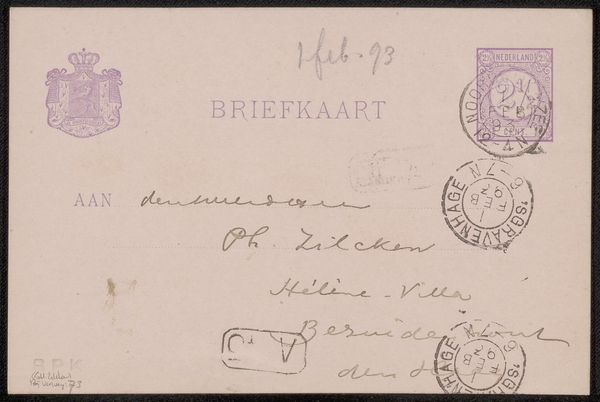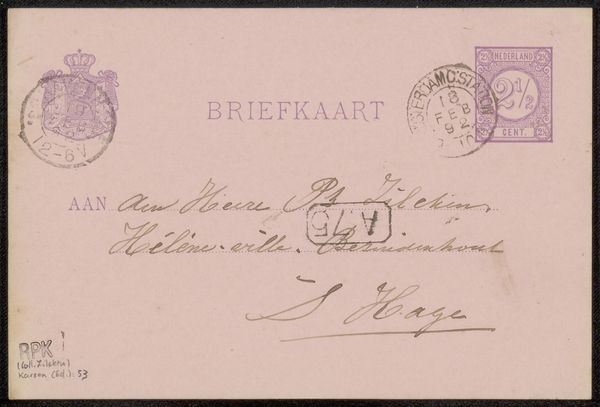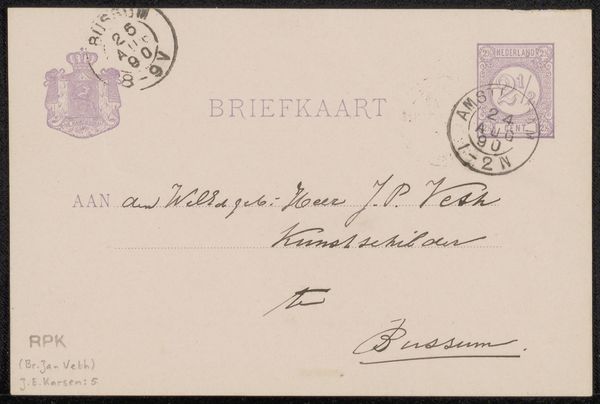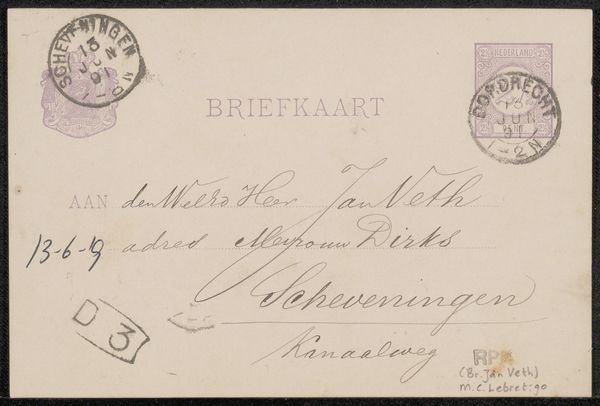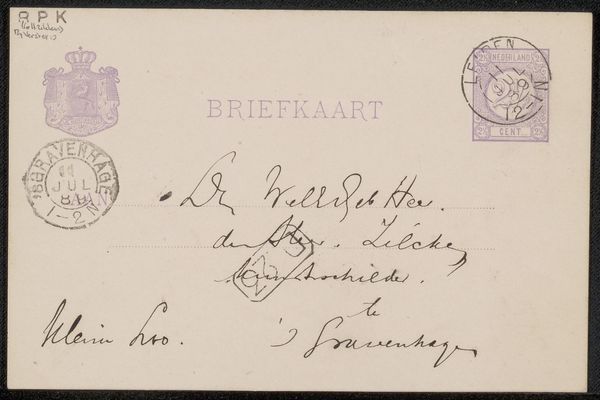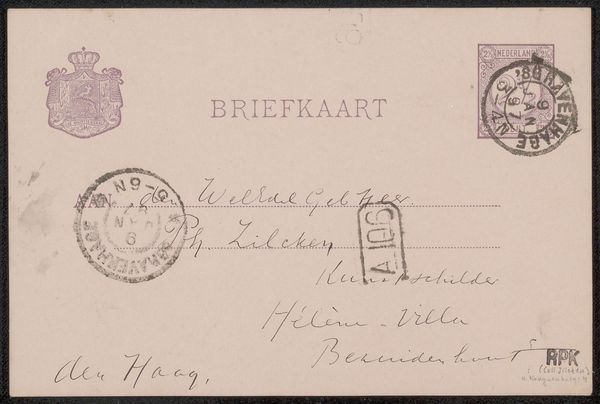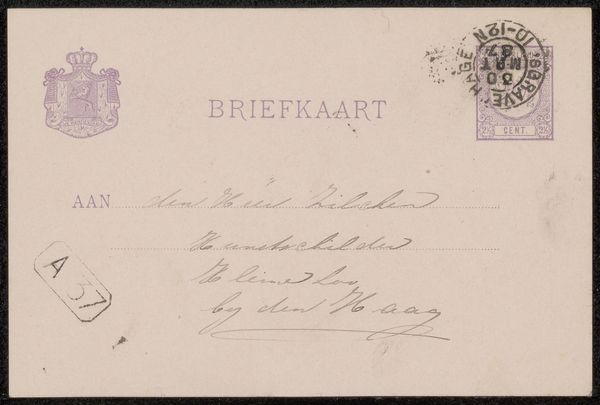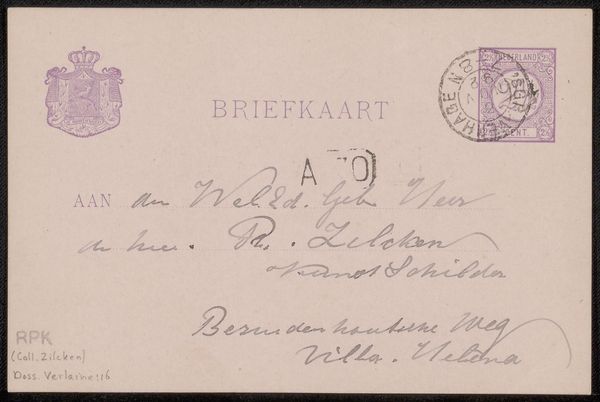
drawing, print, paper, ink, pen
#
drawing
#
pen drawing
# print
#
pen sketch
#
old engraving style
#
hand drawn type
#
paper
#
personal sketchbook
#
ink
#
ink drawing experimentation
#
pen-ink sketch
#
pen work
#
sketchbook drawing
#
pen
#
sketchbook art
#
calligraphy
Copyright: Rijks Museum: Open Domain
Curator: This is "Briefkaart aan Philip Zilcken," an undated pen and ink drawing on paper by Albert Verwey, likely made before 1893. What strikes you first about this unassuming postcard? Editor: Well, it's just that... it’s literally a postcard. I see some beautiful handwriting, plus a stamp and a postmark, so someone actually sent this through the mail! What's interesting is how Verwey turned this everyday object into art. What aspects of its materiality do you find compelling? Curator: The deliberate act of using a readily available, mass-produced object like a postcard—typically for brief messages—challenges the preciousness associated with fine art. Ink, pen, paper: these are accessible materials, suggesting a democratizing impulse. We have to consider, too, how the postal system itself functioned as a network of social exchange, a material infrastructure shaping communication and, in this case, artistic expression. How does knowing this was intended for communication impact our perception? Editor: That's a great point. It wasn't necessarily conceived as a piece for a museum, which really does make it even more meaningful! The drawing feels immediate, a fleeting thought captured. Curator: Exactly. Think about the labor involved—the gesture of handwriting, the act of physically sending it. It resists easy categorization. Is it art, craft, a functional object, or all of the above? Where does it sit within a culture of correspondence and exchange? Editor: I see. It forces us to reconsider those boundaries, placing more emphasis on intention, material context, and reception rather than just the "artist's genius." Thanks! Curator: And it also demonstrates how even mundane materials, within a network of production and consumption, can yield surprising artistic insights.
Comments
No comments
Be the first to comment and join the conversation on the ultimate creative platform.
